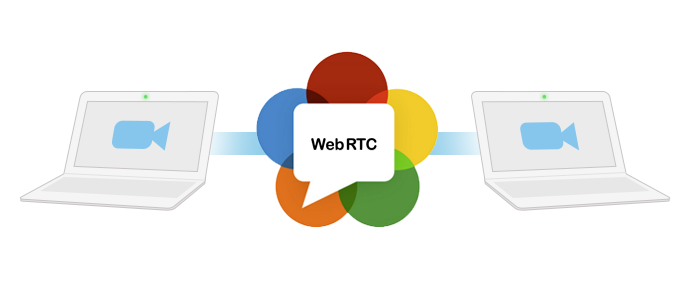WOXTEL - Anonymous VoIP-call Service

An anonymous peer-to-peer VoIP service that provides secure data transfer using end-to-end encryption and streaming audio, video and content over secure channels and encrypted DTLS and STRP connections based on WebRTC.
What WOXTEL is?
WOXTEL – is an anonymous peer-to-peer VoIP communication service that provides secure user communications over the WebRTC protocol and secure exchange of text and multimedia messages, images, audio and video files over the Internet.
Right to anonymity of the users
The right to anonymity (privacy) of the users on the Internet has already become a global standard for ensuring fundamental human and civil rights in the digital era, first of all, the right to privacy, privacy of conversations, correspondence and other data.
With the advent of online censorship, the collection and analysis of data from ordinary users, with the likelihood of further pressure on them or even harassment, Internet users should have the right to remain anonymous, use anonymous communication technologies and confidential data transmission over the Internet. This makes it possible to realize the rights of the citizen to freedom of opinion and expression in the digital age. This opinion is shared by the UN Human Rights Council, which approved a report on the problem of anonymity of the users on the Internet. This is the view we hold at WOXTEL - it drives all our solutions, even when these solutions are neither easy nor popular.
Right to the Data confidentiality
The Data confidentiality is the right to privacy, which guarantees the protection of citizens from intrusion into their privacy by third parties and the non-proliferation of data that defame their honor and dignity. Online data privacy drives global innovation and economic growth and strengthens democracy.
The foundation of a just, secure and democratic society is when the right to data confidentiality is equally ensured for all citizens, not just for the selected individuals or organizations.
This belief is essential to WOXTEL's fundamental philosophy that audio and video calls, messages, files and other content transmitted by all the users through WOXTEL should be kept confidential at all costs.
The highest level of the Data privacy for everyone, whether civilians, military personnel, officials or VIPs, working in the most important and secret organizations in the world - they are all equally important to our mission to create the most secure and confidential communication platform in the world.
WOXTEL does not transfer the Data to third parties
Unlike instant messengers, WOXTEL does not transfer the user data to third parties, since it either does not have access to it, or cannot decrypt it within a reasonable time. To use WOXTEL, you do not need to provide any personal data (phone number, e-mail address, social media account), allowing you to associate the user with a real person (impersonate). All the conversations based on the WebRTC protocol are carried out directly peer-to-peer (point-to-point) and are encrypted with the DTLS and STRP protocols, they are not broadcast anywhere else. That is, all audio and video user communications actually take place directly with each other without WOXTEL's intermediary involvement.
Thus, streaming data of audio and video calls is transmitted over the Internet in encrypted form and is not stored anywhere, and information from chats, including messages, images, audio, video and other files, is protected by end-to-end encryption and is stored in the cloud of the ©Woxtel network for a short time. To encrypt all data stored in WOXTEL, a combination of 256-bit symmetric AES encryption, 2048-bit RSA encryption and a secure key exchange algorithm is used; only their addressees can decrypt the data. Thus, even WOXTEL cannot read user correspondence and decrypt their files.
There is no need to wait until the right to confidentiality of data and anonymity of users on the Internet is revised and enshrined in law, use WOXTEL now!
WOXTEL uses P2P technology for transferring data without intermediaries using the WebRTC protocol.

WebRTC (Web Real-Time Communications) technology implements the transfer of audio, video data and content between any applications and browsers without intermediaries. This versatile technology has received the status of a recommended standard by the W3C, which develops and implements the most advanced technology standards for the Internet.
All W3C standards are reviewed for the web content accessibility support by the APA (Accessible Platform Architectures Working Group). They are directly related to the web accessibility.
Among other things, the Internet Engineering Task Force (IETF) committee, which is engaged in the development of protocols and architecture of the Internet, has published documents describing the architecture, protocol elements, modes of transport and mechanisms for correcting WebRTC errors. All these data have received the "Recommended Standard" status.
About WebRTC technology
The technology allows web applications and sites to capture and selectively transmit audio and video streams, as well as exchange data between the browsers without the use of intermediaries. It is due to that technology we can call our colleagues directly from the browser without the need to install plugins and other software. The applications built on the basis of this standard handle real-time voice and video traffic using HTML and JavaScript only. Google Meet and a number of other web conferencing applications work on it, for example.
WebRTC technology is being developed by Google since 2009. In 2011 the company made public its best practices and technologies used for processing audio and video files obtained after a takeover of GIPS company which was developing the system of digital processing of signals. At the same time Google granted a free access to the patents connected with WebRTC.
WebRTC consists of several interconnected programming interfaces (APIs) and protocols. Google began its technology standardization process with companies such as Mozilla, Microsoft, Cisco and Ericsson.
By the way, WebRTC (like HTML5) has become one of the reasons for the "death" of the Flash technology. Since 2017, the leading browsers have officially stopped supporting Flash and the technology has disappeared from the market.
Now the WebRTC technology ranks second in the TOP-e video communication protocols after the proprietary Zoom. Standard H.323, SIP, Microsoft Teams, and Cisco Webex have not yet succeeded.
WebRTC is used in video and audio conferencing applications, games, collaboration platforms, instant messengers, streaming and content distribution systems. Right now, the WebRTC technology is experiencing its finest hour.
Advantages of the standard
• Can work directly from the browser without installing additional software and plugins.
• Uses modern audio and video codecs, as a result - provides high quality communication.
• Works over secure and encrypted connections using the DTLS and STRP protocols.
• Flexibility to implement a control interface based on the HTML5 and JavaScript.
• Open source.
• Versatility: the WebRTC-based communication applications work well with any operating system if the browser supports WebRTC, i.e., it is sufficient to have a modern browser to get a possibility of communication with WebRTC.
Disadvantages of the standard
For many users, these disadvantages will be insignificant, but you need to be aware of them.
• Communication applications based on WebRTC are not yet compatible with each other, which is why we cannot call from WOXTEL to Google Meets, or to any BigBlueButton.
• Another disadvantage of the WebRTC protocol is that WebRTC is a peer-to-peer VoIP communication protocol that does not hide the end IP addresses of users. Proxies and Tor will not cope with the problem either; only VPN services will help to hide the end IP addresses of users.
Technology operation on the example of a call between two subscribers through a browser.

What does WebRTC consist of?
At the structural level, its components are:
• a user session management systems;
• an engine for sound processing: you can use different codecs and noise suppression methods;
• an engine for video processing;
• a transport layer: for data transmission, you can use the DTLS and SRTP protocols in conjunction with the technologies for organizing P2P communication channels.
As we have mentioned earlier, you can work with WebRTC capabilities through a specially prepared JavaScript API. The API includes interfaces such as getUserMedia, RTCPeerConnection, RTCDataChannel, and getStats.
The getUserMedia interface is responsible for receiving audio and video from the connected devices such as a webcam and microphone or file. The RTCPeerConnection interface is responsible for establishing a connection between users, processing signals and protecting the communication channel. The RTCDataChannel helps to exchange data during the conference (using the typical WebSockets API). For statistics, go to the getStats interface.
What is next?
At the moment, only the basic parts of WebRTC have been standardized. What can be expected in the next version of the standard?
• An extension that will allow the QUIC protocol to be used as a transport and AV1 video codec.
• WebTransport API to simplify streaming for multiple recipients.
• API Scalable Video Coding, which adapts the video stream to the client's bandwidth.
• Live processing of the audio and video streams, including using machine learning systems.
• Tools for establishing a permanent communication channel with "smart" devices.
Important! Turn on VPN to anonymize your IP address!
To hide your IP address during audio and video calls - enable VPN tunnel!
WebRTC connection is peer-to-peer (no middleman), redirect VoIP traffic through VPN tunnel to hide your IP using any VPN service.